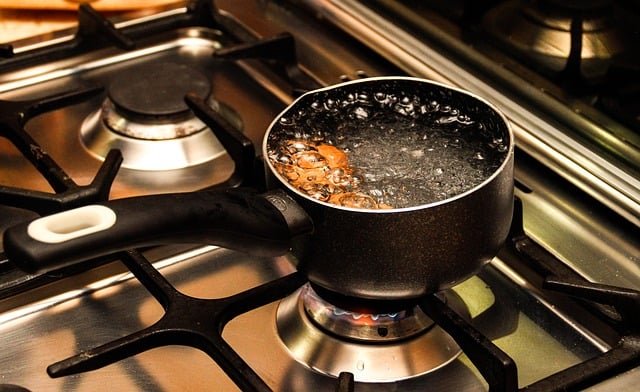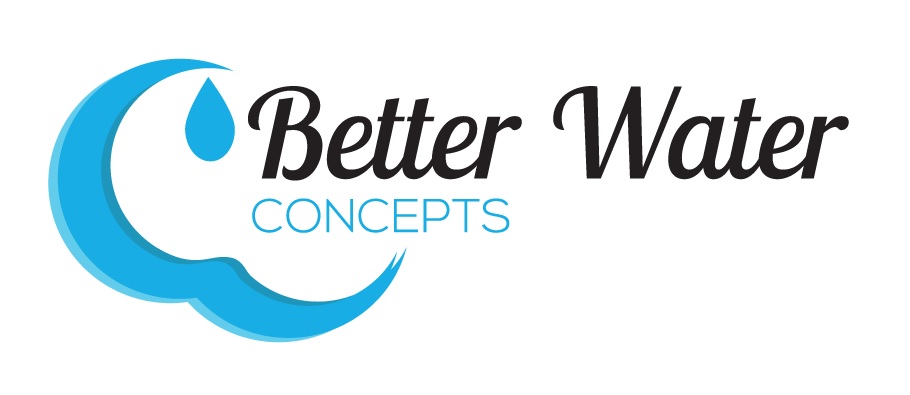Chemical Removal, Home Water Treatment
Does Boiling Water Remove Lead?
We're an affiliate
We hope you love the products we recommend! Just so you know, we may collect a share of sales or other compensation from the links on this page. Thank you if you use our links, we really appreciate it!
Does Boiling Water Remove Lead?
I’m sure you’ve heard the news about people drinking water contaminated with lead. News about lead in the water in Flint, MI is still being reported. The problem is worse than originally thought as many cities across the USA have reported finding lead in their drinking water. People, like you, are looking for ways to get rid of the lead in their water.
Sometimes water officials issue boil orders to make water safe to use after a water main break or low pressure condition. The purpose of the boil order is to kill any disease-causing bacteria that may have entered the distribution system and contaminated the water. However, this makes many people ask,
“Does boiling water remove lead?”

The quick answer is, “no.” The longer answer to the question “does boiling water remove lead?” is, “No. In fact, boiling the water will cause the water to evaporate as steam and actually raise the level of lead in the water.” Lead is a heavy metal and does not evaporate. The boiling point of lead is 3180°F while the boiling point of water is 212°F.
Why You Should Remove the Lead in Your Water
One reason you should get rid of lead in your water is to protect your health. Lead is a toxic metal that can cause various problems if ingested over time, including kidney disease and high blood pressure. It can also cause anemia.
Lead is Especially Toxic to Children and Infants
Even low levels of exposure to lead can cause learning disabilities, behavioral problems, and delayed growth. If you have a baby or toddler in your house, you should be extremely careful about the water they drink and bathe with.
Also, if you are pregnant, then the last thing that you want is to ingest lead while carrying the child. In children, low levels of exposure to lead have been linked to:
- ADHD
- Lower IQ
- Miscarriage or premature birth
How Does Lead Get into Water?
Water is known as the universal solvent. That means, under the right conditions, it can dissolve almost anything. Pure water won’t stay pure for long. It will dissolve minerals like calcium and magnesium, gases like oxygen and carbon dioxide and metals like iron, manganese and, of course, lead.
When the water makeup is just right, it can dissolve lead just by coming in contact with it.
You may ask, “but where is the lead?”
The Lead is in Your Plumbing
Good question. Your home can have lead pipes if it is very old. Even if you have copper pipes, there can still be lead-based solder holding them together. Some other fittings like meters,regulators and valves in your plumbing system may contain some lead.
Fun Fact: Lead pipes were first used in the Roman Empire and this is where the word “plumbing” comes from. The Latin word for lead, plumbum, became known as plumbing through usage of these heavy metals to transport water throughout buildings.
Lead gets into the water by coming in contact with pipes and fittings for an extended period. The longer the water sits in the pipes, the higher the level goes.

When are Lead Levels in Water the Highest?
Usually, lead levels are the highest first thing in the morning or anytime the water has been sitting stagnant for a long period. While everyone’s gone to work or school. When you’re on vacation. While the entire house is asleep. Anytime the water just sits in the pipes, it could be slowly dissolving the lead.
An Important Piece of Information that Can Keep You Safe
A very important step if you’re not doing anything to remove lead from the water you drink and cook with, is to flush the system for at least two minutes or until the water runs cold. This will remove any water with high concentrations of lead.
Flushing can be time consuming and annoying first thing in the morning. Fortunately, there are simple things you can do to deal with lead in your water…
Removing Lead
Consider home water treatment methods, such as carbon filters designed to remove lead, reverse osmosis filters, and distillers. These last two methods are usually used to treat water at only one faucet.
Activated Carbon Filter
Activated carbon filters are the best way to remove lead from drinking water. There are different options for activated carbon filters.
You can install them:
- To the end of a faucet
- Water pitchers with the filter inside
- Under the sink
- On the countertop
- To the main line coming into the house
Be sure to check that the activated carbon filter you use is certified to remove lead. The filter must be rated to NSF 53 standards.
Distillation
Did you know that distillation is a technique used to purify water? It can remove lead, as well as other contaminants. Distilling involves boiling contaminated water and condensing the vapor to produce pure, safe drinking water.
In order to distill water, you need a very high temperature and that takes a lot of energy. This process is not very efficient because of the high energy requirements. It’s also about the slowest way to purify drinking water.
Reverse Osmosis
Another way to remove lead from water is by using a reverse osmosis filter. These filters utilize a semi-permeable membrane that allows clean water to pass through while removing contaminants such as lead, heavy metals, and other minerals.
Home filtration methods such as reverse osmosis are a small, compact and specially designed system for a home that can easily be installed under the sink.
It is best to note that although reverse osmosis filters can remove lead from water; they are also considered inefficient. This is because a reverse osmosis filter will waste up to 2 to 3 gallons of water for every gallon produced.
Home Reverse Osmosis filtration systems can cost anywhere from $200 to $1,000 or more, depending on the amount of contaminants that need to be removed from the water.
Does Boiling Water Remove Lead?
The answer is “NO”. The household pipes can have lead in them and the more time water sits in your plumbing system, the higher the concentration of lead. If you want to prevent this from happening or if it has already happened, there are a few things you can do:
- Install an activated carbon filter that is certified for NSF 53 standards
- Choose a distillation unit
- Select a reverse osmosis filter
- Consider replacing old copper piping with new plastic piping.
The key to preventing high concentrations of lead coming into contact with your tap water is “flushing.” Flushing removes any stagnant water sitting in your plumbing for long periods of time which may be slowly dissolving the lead away.
Do what it takes to keep you and your family safe from lead in drinking.
